Potřebujeme váš souhlas k využití jednotlivých dat, aby se vám mimo jiné mohly ukazovat informace týkající se vašich zájmů. Souhlas udělíte kliknutím na tlačítko „OK“.
ASTM E1774-12
Standard Guide for Electromagnetic Acoustic Transducers (EMATs)
Automaticky přeložený název:
Standardní Guide pro elektromagnetickou Akustické měniče (EMATs)
NORMA vydána dne 15.6.2012
Informace o normě:
Označení normy: ASTM E1774-12
Poznámka: NEPLATNÁ
Datum vydání normy: 15.6.2012
Kód zboží: NS-42986
Počet stran: 8
Přibližná hmotnost: 24 g (0.05 liber)
Země: Americká technická norma
Kategorie: Technické normy ASTM
Kategorie - podobné normy:
Anotace textu normy ASTM E1774-12 :
Keywords:
angle beam, conductor, electromagnetic acoustic transducer (EMAT), flaw detection, Lamb waves, longitudinal waves, Lorentz forces, magnet, magnetostriction, Rayleigh waves, shear waves, straight beam, thickness gaging, ultrasonics, wave mode, weld examination, ICS Number Code 77.040.20 (Non-destructive testing of metals)
Doplňující informace
| Significance and Use | ||||||||||||||
|
General—Ultrasonic testing is a widely used nondestructive method for the examination of a material. The majority of ultrasonic examinations are performed using transducers that directly convert electrical energy into acoustic energy through the use of piezoelectric crystals. This guide describes an alternate technique in which electromagnetic energy is used to produce acoustic energy inside an electrically conductive or ferromagnetic material. EMATs have unique characteristics when compared to conventional piezoelectric ultrasonic search units, making them a significant tool for some ultrasonic examination applications. Specific Advantages—Since the EMAT technique is noncontacting, it requires no fluid couplant. Important consequences of this include applications to moving objects, in remote or hazardous locations, to objects at elevated temperatures, or to objects with rough surfaces. The technique is environmentally safe since it does not use potentially polluting or hazardous chemicals. The technique facilitates the rapid scanning of components having complex geometries. EMAT signals are highly reproducible as a consequence of the manner in which the acoustic waves are generated. EMATs can produce horizontally polarized shear (SH) waves without mode conversion and can accommodate scanning while using SH waves. (Note that in order to produce this wave mode by conventional ultrasonic techniques, either an epoxy or a highly viscous couplant is required. Thus, conventional ultrasonic techniques do not lend themselves easily to scanning when using SH wave modes.) Also, EMATs provide for the capability to steer shear waves electronically. Specific Limitations—EMATs have very low efficiency. The insertion loss of EMATs can be as much as 40 dB or more when compared to conventional ultrasonic methods. The EMAT technique can be used only on materials that are electrical conductors or ferromagnetic. The design of EMAT probes is usually more complex than comparable piezoelectric search units. Due to their low efficiency, EMATs usually require more specialized instrumentation for the generation and detection of ultrasonic signals. High transmitting currents, low-noise receivers, and careful electrical matching is imperative in system design. In general, EMAT probes are application-specific, in the same way as piezoelectric transducers. |
||||||||||||||
| 1. Scope | ||||||||||||||
|
1.1 This guide is intended primarily for tutorial purposes. It provides an overview of the general principles governing the operation and use of electromagnetic acoustic transducers (EMATs) for ultrasonic examination. 1.2 This guide describes a non-contact technique for coupling ultrasonic energy into an electrically conductive or ferromagnetic material, or both, through the use of electromagnetic fields. This guide describes the theory of operation and basic design considerations as well as the advantages and limitations of the technique. 1.3 This guide is intended to serve as a general reference to assist in determining the usefulness of EMATs for a given application as well as provide fundamental information regarding their design and operation. This guide provides guidance for the generation of longitudinal, shear, Rayleigh, and Lamb wave modes using EMATs. 1.4 This guide does not contain detailed procedures for the use of EMATs in any specific applications; nor does it promote the use of EMATs without thorough testing prior to their use for examination purposes. Some applications in which EMATs have been applied successfully are outlined in Section 9. 1.5 Units—The value stated in inch-pound units are to be regarded as the standard. The values given in parentheses are for information only. 1.6 This standard does not purport to address all of the safety concerns, if any, associated with its use. It is the responsibility of the user of this standard to establish appropriate safety and health practices and determine the applicability of regulatory limitations prior to use. |
||||||||||||||
| 2. Referenced Documents | ||||||||||||||
|
Podobné normy:
Historická
15.1.2008
Historická
1.3.2014
Historická
1.9.2010
Historická
1.5.2010
Historická
1.5.2012
Historická
1.6.2013


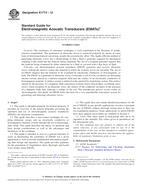
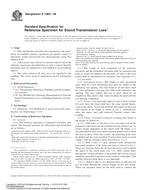 ASTM E1289-08
ASTM E1289-08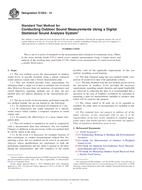 ASTM E1503-14
ASTM E1503-14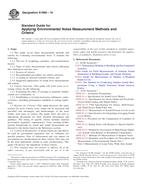 ASTM E1686-10
ASTM E1686-10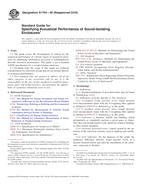 ASTM E1704-95(2010)..
ASTM E1704-95(2010)..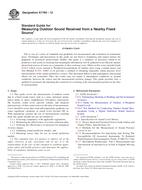 ASTM E1780-12
ASTM E1780-12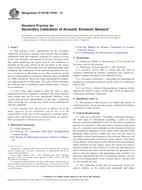 ASTM E1781/E1781M-13..
ASTM E1781/E1781M-13..
 Cookies
Cookies
